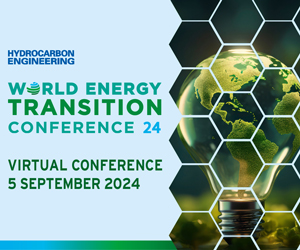Energy demand is reaching unprecedented heights, driven by resource-intensive technologies like artificial intelligence.
Renewable solutions, while crucial, are not enough on their own to meet this growing need.
Faced with funding freezes and adjustments to subsidies, companies in solar, wind, and hydrogen are fighting to sustain their business models.
These challenges arise as methanization projects and biomass valorization play a pivotal role in converting organic waste into renewable energy. Many companies find themselves having to innovate without stable federal support, complicating their expansion in the market. For example, GM Energy has observed an unprecedented increase in energy demand, radically changing initial forecasts. According to the Center for Strategic & International Studies, energy demand in the United States is expected to grow by more than 16% in the next five years, contrasting sharply with the modest growth of 0.5% annually observed previously. Subsidies, once vital for young renewable companies, are now being questioned by policies favoring fossil fuels. This uncertainty pushes companies to seek cost parity to become viable without government aid. Leaders like Ross Meyercord insist on the need to achieve this parity quickly to overcome current financial obstacles. Meanwhile, innovative initiatives such as green hydrogen projects show the way towards sustainable solutions, even in the absence of continuous subsidies. The resilience and adaptability of companies in the sector will determine their success in this rapidly changing energy landscape.

The global energy transition is facing a major challenge. With the exponential rise in electricity demand, fueled by energy-intensive technologies like artificial intelligence, renewable energy sources are more crucial than ever. However, this rapid expansion encounters significant obstacles such as fluctuating government incentives and rising tariffs, putting the resilience and viability of renewable business models to the test.
Why is electricity demand experiencing such an increase?
Electric grids around the world are under unprecedented pressure. The massive adoption of advanced technologies, including artificial intelligence and the Internet of Things, requires a growing energy consumption. According to the Center for Strategic & International Studies, energy demand in the United States is expected to increase by more than 16% over the next five years, sharply contrasting with the average annual growth of 0.5% observed between 2001 and 2024.
This increase is also driven by ongoing urbanization and economic expansion in various regions. In New York, for example, energy needs have undergone a drastic transformation, shifting from a decline to sustained growth. Aseem Kapur, revenue director at GM Energy, emphasizes that “utilities are facing unprecedented demand,” clearly illustrating this trend.
What are the main obstacles to incentives for renewable energies?
Subsidies have historically been essential to support the growth of renewable energy. However, fluctuating policies create an uncertain environment. The Trump administration attempted from its outset to “unleash” an era of fossil fuel exploration while eliminating “unfair subsidies” for green energies. This approach has created instability that complicates long-term planning for many companies.
In 2022, federal subsidies accounted for 46% of energy aids in the United States, making renewables the largest share of the “energy pie.” However, aid for natural gas and oil has become a net cost for the government, reversing a trend that previously favored these sectors.
How do tariffs influence the renewable energy market?
Tariffs on key components of renewable systems represent another major challenge. Increasing tariffs can make renewable energy projects less competitive compared to traditional sources. Ross Meyercord, CEO of Propel Software, explains that “all companies integrated cost parity into their business model,” but rising tariffs can disrupt this equation, making it difficult to achieve financial independence without subsidies.
Moreover, tariffs can affect international supply chains, limiting access to essential technologies and increasing production costs. This can slow the adoption of renewable energies, despite their long-term economic viability.
What strategies are companies adopting in response to these challenges?
Faced with these obstacles, renewable energy companies are adopting various strategies to ensure their survival and growth. One approach is to diversify funding sources and reduce reliance on government subsidies. For example, Q Hydrogen is working to establish the first economically viable renewable hydrogen power plant without subsidies, demonstrating that it is possible to develop independent projects.
Another strategy is technological innovation to improve efficiency and reduce production costs. Optimizing energy storage technologies, such as batteries and hydrogen cells, makes renewable energies more competitive against fossil fuels. Whit Irvin Jr., CEO of Q Hydrogen, emphasizes that “innovation is crucial to ensure that fossil energy is directed towards the right uses while developing sustainable alternatives.”
What is the impact of federal policies on the renewable energy sector?
Federal policies play a decisive role in the direction the renewable energy sector takes. Political decisions, such as executive orders or laws on subsidies, can either stimulate or hinder innovation and adoption of green technologies. For instance, Trump’s executive order aimed at increasing coal production negatively impacted investment in renewable energies.
To overcome these challenges, some companies are seeking to establish private partnerships and strengthen their relationships with international players to diversify their markets and reduce dependence on government aid. Meyercord anticipates that “private partnerships will significantly impact the future of the electrical grid,” enabling companies to adapt more quickly to political and economic changes.
To what extent can innovation save renewable energies?
Innovation is often cited as the key to overcoming the challenges of the renewable energy sector. By developing new technologies and improving existing systems, companies can lower costs, increase efficiency, and make renewables more competitive. For example, hydrogen cells provide backup or primary energy for off-grid data centers, offering a viable alternative to traditional storage solutions.
Q Hydrogen plans to launch a facility in New Hampshire capable of producing hydrogen using water, without relying on subsidies. This project exemplifies how innovation can lead to sustainable and economically viable solutions, even in the absence of government aid. Innovation not only helps to overcome current obstacles but also prepares the ground for broader adoption of renewable energies in the future.
What is the future of fossil fuels in the energy mix?
Despite the rise of renewable energies, fossil fuels will continue to play an important role in the global energy mix. Whit Irvin Jr. asserts that “we will not abandon fossil fuels overnight.” They will remain a significant component of the energy ecosystem for decades to come, while green technologies gain maturity and adoption.
The transition to cleaner energy will be gradual, with a gradual reduction in fossil fuel use as alternatives become more affordable and accessible. This coexistence of energy sources creates a dynamic environment where renewables must prove their economic competitiveness and reliability to establish themselves sustainably.
How can the sector ensure an effective energy transition?
To ensure a successful energy transition, close collaboration between the private sector, governments, and research institutions is essential. Companies must continue to innovate while seeking strategic partnerships to secure funding and access new technologies. Governments, in turn, must develop stable and predictable policies that support the development of renewable energies without creating excessive dependency on subsidies.
Furthermore, education and awareness play a crucial role in the acceptance and adoption of new energy technologies. By informing the public and stakeholders about the economic and environmental benefits of renewable energies, it is possible to create a stronger demand and facilitate the transition towards a more sustainable energy future.
What are the specific challenges facing different regions?
The challenges facing renewable energies vary by region due to climatic, economic, and political differences. For example, in Texas, while wind energy accounts for 24% of the state’s energy profile, a pro-fossil fuel attitude persists, as evidenced by Attorney General Ken Paxton’s stance in favor of coal. This duality shows that even in regions rich in renewable resources, political and economic interests can slow the adoption of new technologies.
In other regions, government incentives may be more favorable, facilitating a quicker adoption of renewables. In New York, renewable energy projects benefit from economic advantages that stimulate their development, despite challenges posed by light pollution and other environmental constraints. Each region must therefore adapt its strategies according to its local specifics to maximize the impact of renewable energies.
What is the importance of industrial partnerships?
Industrial partnerships are crucial for overcoming the economic and technological challenges of the renewable energy sector. By collaborating with technology companies, research institutions, and financial players, renewable companies can access additional resources, share knowledge, and accelerate innovation. These collaborations also create synergies that strengthen the resilience of companies against market fluctuations and political changes.
Ross Meyercord emphasizes that “private partnerships will have a significant impact on the future of the electrical grid,” allowing for better integration of renewable technologies and more effective energy demand management. These strategic alliances are essential for creating a sustainable and adaptable energy ecosystem capable of meeting growing demands while overcoming current obstacles.
How can technological innovations transform the sector?
Technological innovation is the main driver of transformation in the renewable energy sector. Advances in the fields of hydrogen cells, energy storage systems, and solar and wind technologies enable improvements in efficiency, cost reductions, and increase the competitiveness of renewables. For example, hydrogen plants being developed by Q Hydrogen aim to provide reliable and economical backup energy, thus meeting the growing needs of data centers and other critical infrastructures.
Furthermore, integrating smart technologies, such as smart electrical grids and data analysis, facilitates more efficient energy management, optimizing the use of renewable resources and minimizing losses. These innovations not only meet current demand but also prepare the ground for sustainable and resilient future expansion.
What role do local policies play in the development of renewables?
Local policies play a decisive role in the success of renewable energy projects. Local and regional governments can implement favorable regulations, offer additional incentives, and simplify permitting procedures to encourage investment in renewables. For example, some municipalities offer specific grants or tax advantages for solar and wind projects, thus facilitating their rapid and effective deployment.
Moreover, local initiatives can be better tailored to the specific needs of the region, allowing for a more seamless integration of renewables into the existing energy landscape. By collaborating with local communities, companies can also strengthen public acceptance and ensure a more inclusive and supported energy transition.
How can renewable energies contribute to the stability of the electrical grid?
Renewable energies play a crucial role in stabilizing electrical grids by diversifying energy sources and strengthening clean energy supply. Integrating energy storage technologies, such as batteries and hydrogen cells, allows for managing fluctuations in wind and solar production, ensuring a continuous and reliable supply.
Additionally, renewables can reduce dependence on fossil fuels, decreasing the risks of disruptions related to fluctuations in oil and gas prices. Better energy management through renewables also contributes to greater resilience against extreme weather events and other energy crises.
What are the economic benefits of renewable energy projects?
Renewable energy projects offer numerous economic benefits, including job creation, long-term reduction of energy costs, and stimulation of technological innovation. According to a study by Green Just Now, renewable projects can generate billions of dollars in investments and revenues while contributing to local and national economic growth.
Moreover, renewables can offer stability in energy costs by reducing dependence on fossil fuel imports and protecting consumers against market price fluctuations. This stability is particularly beneficial for technology companies and critical infrastructures, which require reliable and affordable energy supply.
What are the environmental challenges associated with renewable energies?
Despite their many advantages, renewable energies are not without environmental challenges. For example, solar and wind projects can impact local ecosystems, particularly concerning light and noise pollution, as well as disruption of natural habitats. A notable example is the giant telescope threatened by a renewable energy project, illustrating the tensions between technological development and environmental preservation.
Additionally, the production and recycling of renewable technologies, such as solar panels and wind turbines, raise questions about sustainability and waste management. It is crucial to develop more environmentally friendly manufacturing and waste management practices to minimize the overall environmental impact of renewables.
What are the economic impacts of nuclear plans on renewables?
Coalition nuclear plans can have significant repercussions on the development of renewable energies. A recent analysis indicates that such a plan could jeopardize renewable energy projects with a potential impact of $58 billion. Nuclear energy, while presented as a low-carbon alternative, requires massive investments and long construction times, thus diverting the financial and human resources needed to accelerate the adoption of renewables.
This competition for funding and infrastructure can slow the growth of renewable projects, limiting their capacity to respond to increasing energy demand. It is essential to find a balance between nuclear development and renewables to ensure a coherent and effective energy transition.
How does the acquisition of renewable projects slow innovation?
The acquisition of renewable energy projects continues to slow due to economic and political uncertainties. Companies hesitate to invest heavily in new projects in the face of fluctuating incentives and unstable tariffs. This reluctance hinders innovation and the expansion of renewable infrastructure, limiting their ability to quickly meet the growing energy demand.
Furthermore, acquisitions can lead to market consolidation, reducing competition and diminishing incentives to innovate. This can slow the development of more efficient and affordable technologies, thereby delaying the transition to a sustainable energy future. It is crucial to maintain a favorable and stable investment environment to encourage innovation and ongoing growth in renewable energies.
What is the impact of subsidies on renewable companies?
Subsidies play an indispensable role in the viability of renewable energy companies, especially during the early stages of development. These financial aids help to cover research and development costs, thereby facilitating achieving cost parity with traditional energy sources. However, a decrease in subsidies or tariff increases may pose significant challenges, forcing companies to quickly find solutions to remain competitive.
Some companies, like Q Hydrogen, have managed to develop economically viable projects without relying on subsidies, demonstrating that it is possible to thrive in an uncertain environment. However, for many others, subsidies remain crucial to support innovation and expand production capacities. Therefore, it is essential to maintain stable financial support to ensure the sustainability and growth of renewable companies.
What is the importance of case studies in the renewable sector?
Case studies provide concrete examples of the successes and challenges faced by renewable energy companies. They help to understand how various strategies are implemented to overcome obstacles and achieve objectives. For example, Q Hydrogen’s initiative to launch a renewable hydrogen production facility without subsidies offers an inspiring model for other companies seeking to reduce their dependence on government aid.
Moreover, case studies help identify best practices and lessons learned, thereby providing valuable insights for decision-makers, investors, and other stakeholders in the sector. They also help to demonstrate the feasibility and economic and environmental benefits of renewable projects, thereby strengthening confidence and interest in future investments in this field.
Articles similaires
Thank you!
We will contact you soon.














